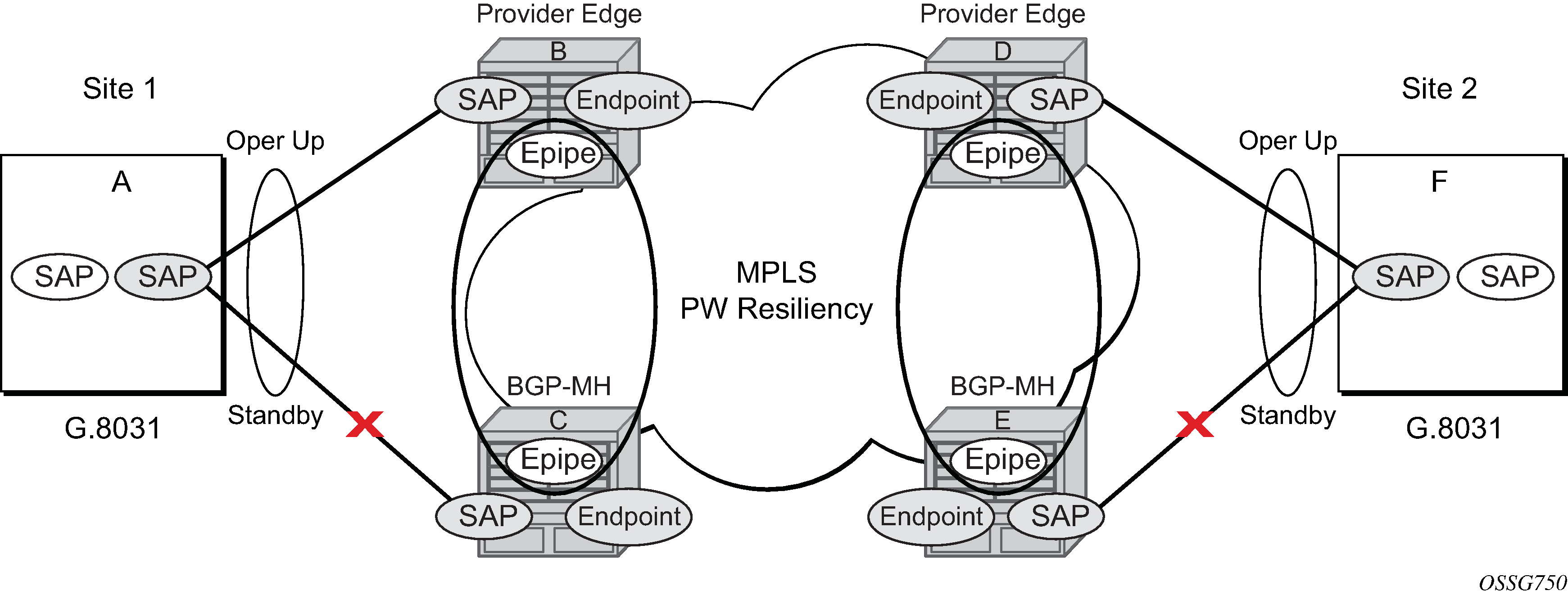Using Epipe in combination with G.8031 and BGP multi-homing in the same manner as VPLS offers a multi-chassis resiliency option for Epipe services that is a non-learning and non-flooded service. MC-LAG (see Access Node Resilience Using MC-LAG and Pseudowire Redundancy) offers access node redundancy with active/stand-by links while Ethernet tunnels offer per service redundancy with all active links and active or standby services. G.8031 offers an end-to-end service resiliency for Epipe and VPLS services. BGP-MH site support for Ethernet tunnels offers Ethernet edge resiliency for Epipe services that integrates with MPLS pseudowire redundancy.
Figure 1 shows the BGP-MH site support for Ethernet tunnels, where a G.8031 edge device (A) is configure with two provider edge switches (B and C). G.8031 is configured on the Access devices (A and F). An Epipe endpoint service is configured along with BGP Multi-homing and Pseudowire Redundancy on the provider edge nodes (B/C and D/E). This configuration offers a fully redundant Epipe service.
